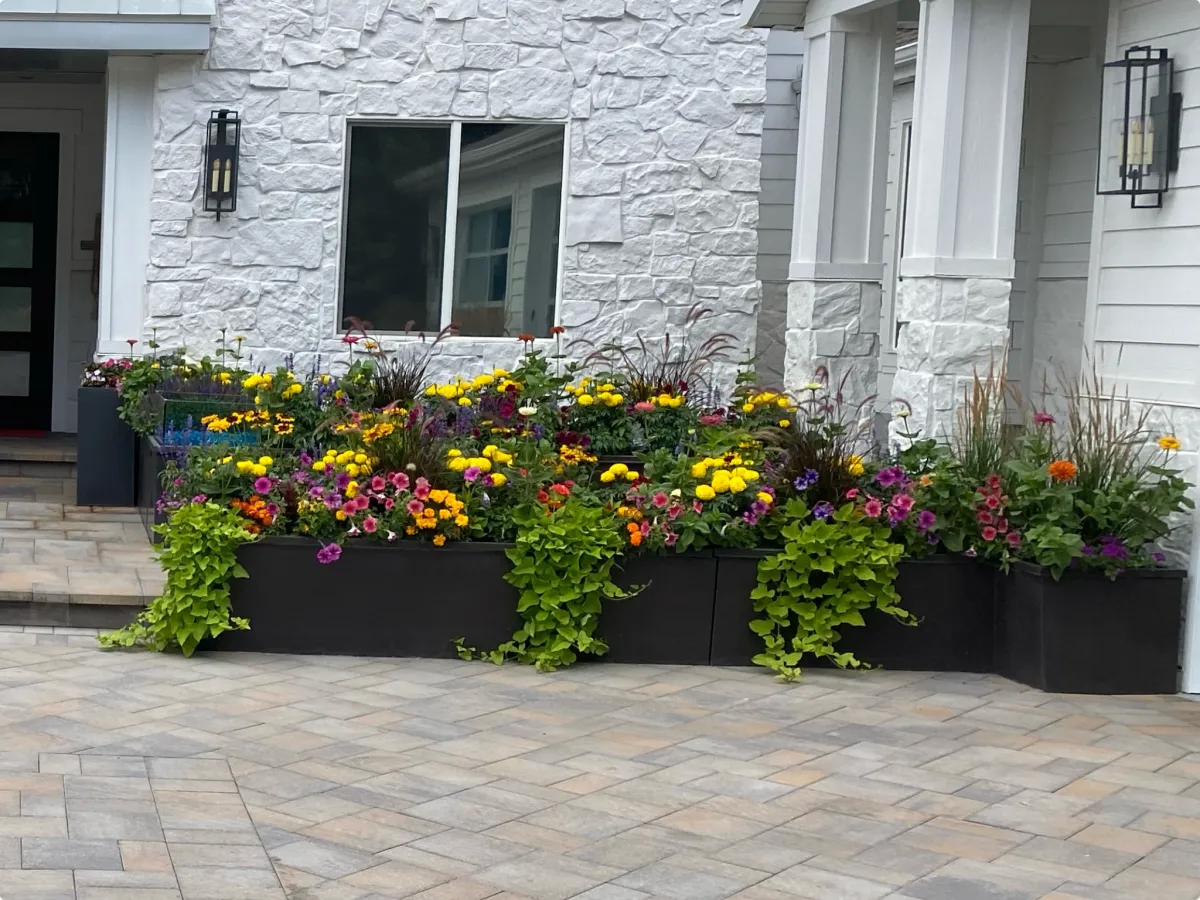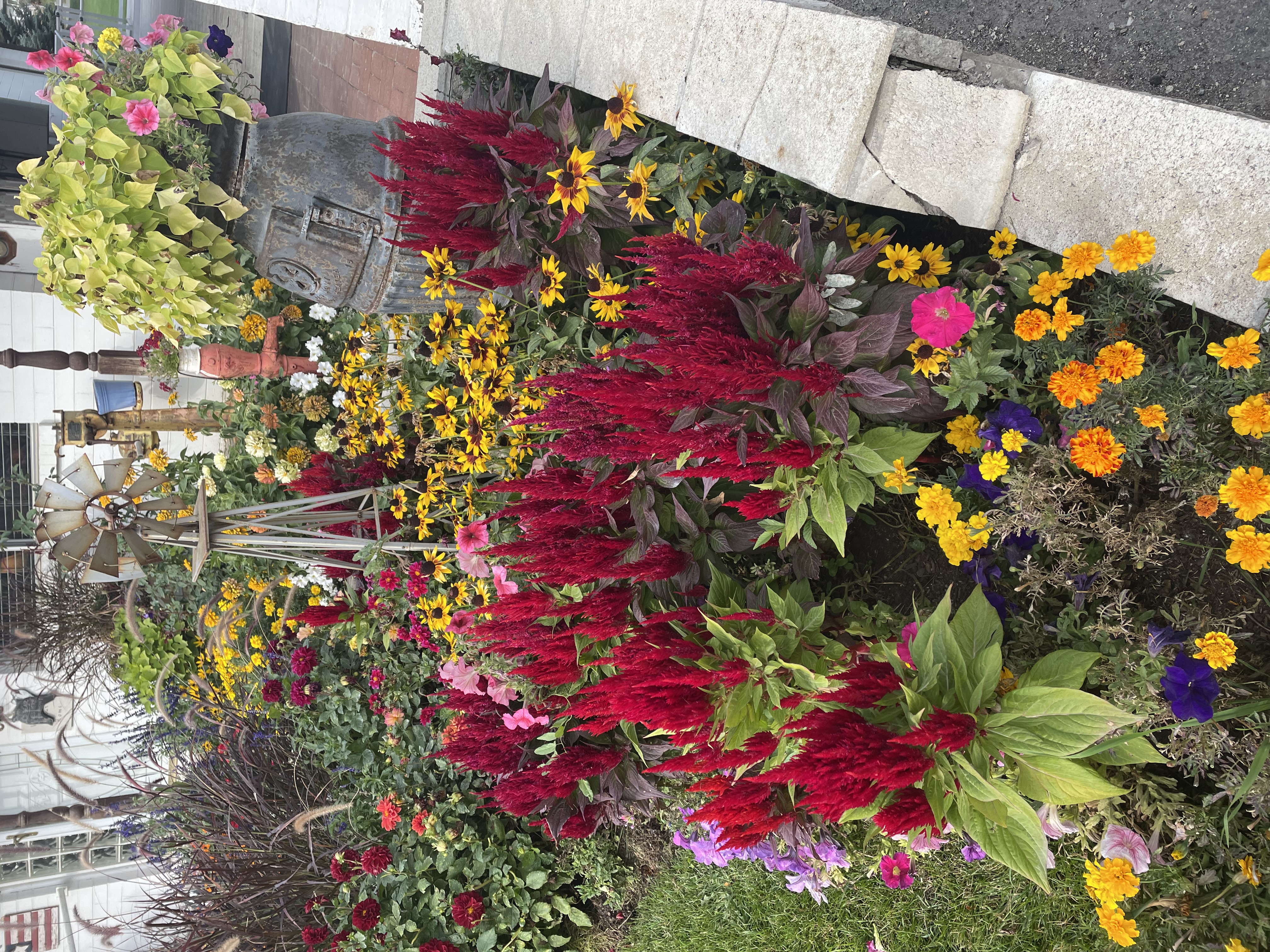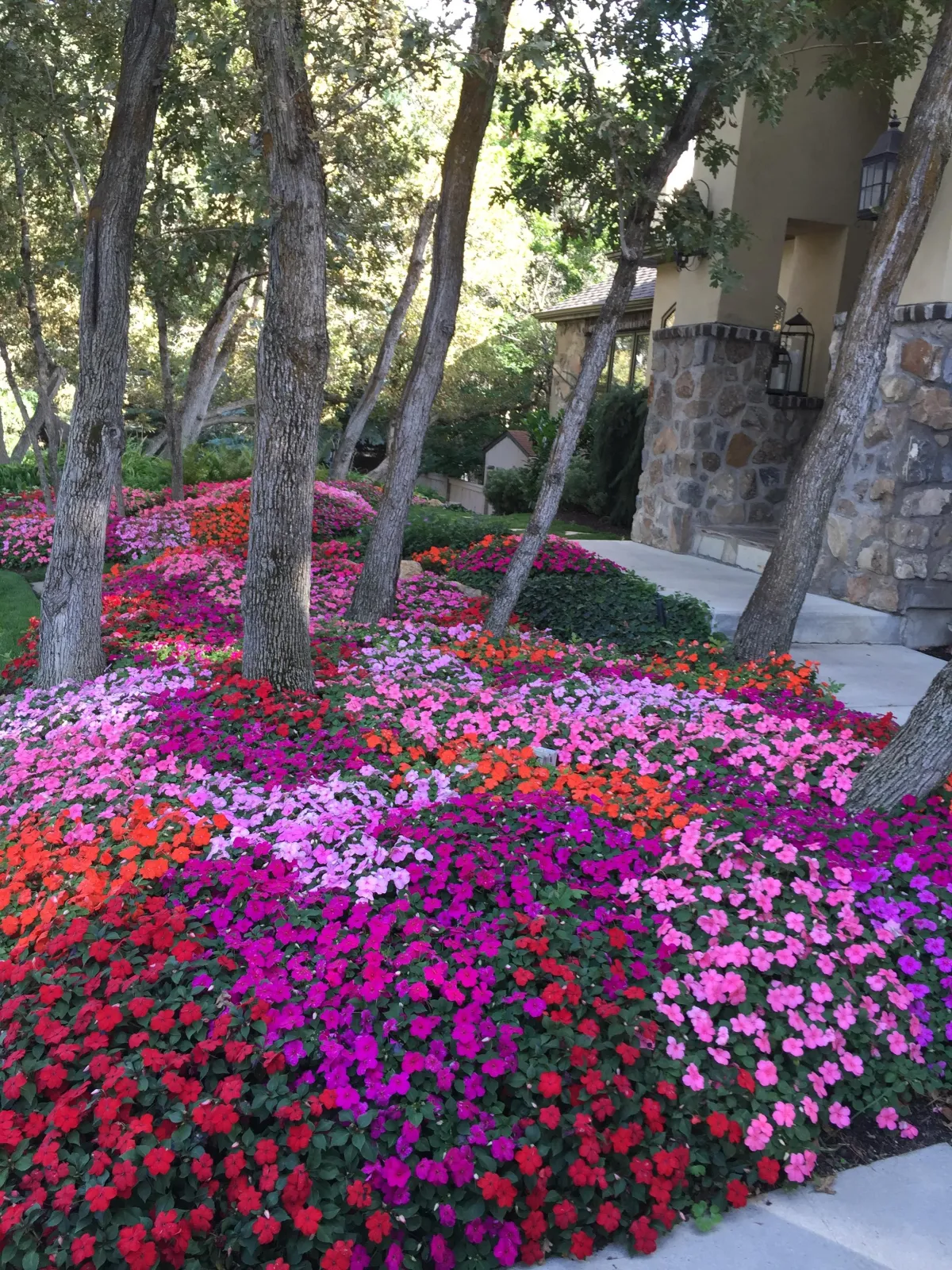Floral Installation
Contact Information and Service Requests
For more information or to request a service quote, please contact:
Utah: Cameron Fox or Hud Fuller, VPs of Business Development
North Carolina: Tanner Towle, President, Owner GrowPro North Carolina
To submit a service request or receive a personalized bid, please use the “Request Bid” button above. Specify your preferred contact person if desired.
Service Overview
GrowPro’s floral installation services enhance the aesthetic appeal of your property through the strategic use of seasonal and permanent floral displays. Our expert team designs and installs vibrant floral arrangements that elevate the landscape, create welcoming environments, and reflect the unique character of each property.

Benefits of Professional Floral Installations
Our floral installations provide some amazing benefits, including:
Visual Appeal: Beautifully arranged flowers immediately improve the appearance of your property, catching the eye of tenants and visitors alike.
Enhanced Ambiance: Flowers can transform ordinary spaces into extraordinary ones, adding color and life that enhance the overall ambiance.
Seasonal Variability: Our seasonal floral services keep your property looking fresh and appropriate throughout the year.
Positive First Impressions: Well-chosen and maintained floral displays create positive impressions, which are critical in commercial and residential settings.
How the Service is Delivered
Custom Design Consultation: We start with a consultation to understand your preferences, property style, and specific requirements.
Selection of Plants: Depending on the site conditions (sunlight, soil type, etc.), season, and desired color schemes, we select the best plants that will thrive in your environment.
Professional Installation: Our experienced team carefully installs the floral displays, ensuring they are set up for success with the right soil amendments and placement.
Maintenance Plans: We offer ongoing maintenance services to keep the floral displays vibrant and healthy, including regular watering, fertilizing, and replacement of any spent plants.

Customization Options
Seasonal Rotations: We can change out floral displays to match seasonal themes or color preferences.
Permanent Installations: For areas suited to year-round bloom, we select and install perennials that offer lasting beauty with less frequent replacements.
Pricing Information
Pricing for floral installations varies based on:
Scope of Installation: Larger or more complex installations will influence the cost.
Type of Plant Material: The choice between annuals, which may need seasonal replacement, and perennials, which are more permanent, affects pricing.
Design Complexity: Custom designs that include a variety of plant types and arrangements may cost more.

Safety and Compliance
All installations are performed with attention to safety and minimal disruption to your property’s daily activities.
Sustainability Practices
Local and Sustainable Sources: We prioritize the use of locally sourced and sustainable plant materials to reduce environmental impact.
Water-Efficient Plants: Whenever possible, we select drought-tolerant plants that require less water, contributing to the sustainability of your property.
What are the best flowers for year-round color?
Choosing the right flowers for year-round color involves selecting species that bloom at different times of the year or those that have long-lasting blooms. The key is to plan your garden so that as one plant's flowers begin to fade, another begins to bloom. Here are some popular choices that can help maintain continuous color throughout the year:
1. Spring Bloomers:
Tulips and Daffodils: These are classic spring bulbs that provide bright early color. They are easy to grow and come in many varieties, ensuring a vibrant start to the year.Pansies: Known for their ability to thrive in cooler temperatures, pansies can provide color even in late winter and early spring.
2. Summer Bloomers:
Petunias: These are durable and available in a multitude of colors, making them perfect for vibrant summer displays.
Marigolds: With their rich gold, orange, and yellow hues, marigolds are excellent for adding summertime warmth to your garden.
Geraniums: Ideal for containers and borders, geraniums offer a variety of colors and have a lengthy blooming period through summer.
3. Fall Bloomers:
Chrysanthemums: Often the go-to plant for fall, chrysanthemums bring a burst of color late in the gardening season with their wide range of colors.
Asters: These provide a pop of color with their star-shaped flowers in shades of blue, purple, and pink, bridging the gap as summer transitions to fall.
4. Winter Bloomers:
Pansies and Violas: Hardy enough to survive mild winters, these can continue to bloom through cooler weather, especially in milder climates.
Camellias: These are evergreen shrubs that bloom in late fall to early spring, providing color and elegance during the colder months.
5. Year-Round Bloomers:
Bougainvillea: In warmer climates, bougainvillea can bloom throughout the year, offering brilliant color and a tropical feel.
Impatiens: If protected from frost, these can bloom year-round in milder climates, providing continuous color with minimal maintenance.
6. Evergreens and Foliage Plants:
Holly: With its bright red berries and deep green leaves, holly can add color even in winter.
Ornamental Kale and Cabbage: These are more about colorful foliage than flowers, but they can add visual interest during the cooler months.
Climate Considerations:
Local Climate: Always consider your local climate when selecting plants. What works for year-round color in one region might not work in another. Consult with local nurseries or gardening experts to choose the best plants that will thrive in your specific conditions.
Incorporating a mix of these plants into your floral installations can ensure that your garden remains vibrant and colorful throughout the year. Each plant's specific care requirements should also be considered to maintain their health and vibrancy.
How often should seasonal flowers be replaced?
Replacing seasonal flowers is essential for maintaining a vibrant and attractive garden or landscape. The frequency of replacement depends on the type of flowers planted, their natural bloom cycles, and the specific climate conditions of your area. Here are some guidelines to help you determine when to replace seasonal flowers:
1. Understanding Bloom Cycles:
Annuals: Annual plants complete their life cycle in one growing season, meaning they sprout, bloom, seed, and die within a single year. Because of this, annuals like petunias, marigolds, and pansies typically need to be replaced each year.
Perennials: These plants return for several years and usually have a specific blooming period during the season. Perennials may not require replacement if they are healthy, but they may need to be divided or rejuvenated if they become overgrown or less vigorous.
2. Seasonal Considerations:
Spring and Summer Flowers: Many summer bloomers can last until the first frost when they will then need to be replaced or cut back. In milder climates, some summer flowers may continue to perform well into fall.
Fall and Winter Flowers: Flowers such as chrysanthemums, pansies, and ornamental kale, planted for fall and winter color, often last until the spring warmth causes them to fade. In colder regions, they may need replacement earlier as they succumb to freezing temperatures.
3. Visual Health Check:
Appearance: Regularly assess the appearance of your flowers. If they start to look wilted, leggy, or sparse, it might be time to replace them even if it's before the expected end of their season.
Disease and Pests: If flowers become diseased or heavily infested with pests, they should be replaced to prevent the spread to other healthy plants.
4. Preparation for New Seasons:
Regular Updates: To keep your floral displays fresh and vibrant, consider planning for replacements as one season transitions to another. This approach keeps your landscapes attractive and adaptable to changing conditions.
Soil Health: Before planting new seasonal flowers, refresh the soil by adding compost or other organic matter. This practice helps support the health of the new plants and can improve flowering performance.
5. Event-Based Replacement:
Special Occasions: Sometimes, flowers might be replaced to accommodate specific color themes or designs for events, regardless of their health or the season.
6. Budget and Planning:
Economic Considerations: Budget constraints might also influence how frequently you can replace flowers. Planning your seasonal changes within a budget can help manage costs while keeping your garden appealing.
In general, seasonal flowers are typically replaced two to three times per year, depending on their bloom span and the local climate. Regular monitoring and maintenance will help extend the life of your flowers and can reduce the frequency of replacements needed.
Can you design floral installations for shaded areas?
Yes, designing floral installations for shaded areas is entirely possible and can transform less sunny spots into vibrant, colorful displays. Shade gardens can be just as beautiful as their sun-drenched counterparts with the right selection of plants and thoughtful design. Here are some key considerations and steps we take when designing floral installations for shaded areas:
1. Understanding Shade Levels:
Light Shade: This might be an area that is shaded for part of the day or receives dappled sunlight. Plants that tolerate partial shade are suitable for these conditions.
Partial Shade: These areas receive only indirect or filtered sunlight for most of the day. Many shade-loving plants thrive in partial shade.
Full Shade: Areas that receive no direct sunlight and are typically shaded throughout the day. These require plants that can thrive with minimal light.
2. Plant Selection:
Choosing the right plants is crucial for shade gardens. We select species that not only survive but thrive in lower light conditions. Examples include:
Hostas: Known for their lush foliage in various colors and patterns, hostas are perfect for shady areas.
Ferns: Ideal for full shade, ferns add texture and greenery to any shadowed garden space.
Astilbe: With feathery, flower spikes and fern-like foliage, astilbes add color and thrive in light to partial shade.
Impatiens: Excellent for adding bright colors to shady spots, impatiens bloom profusely even without much sunlight.
Bleeding Heart: Known for its unique heart-shaped flowers and suitability for shady conditions.
3. Soil and Moisture Management:
Shade areas can often be cooler and moister than sunny spots, but soil conditions can vary. We ensure that the soil is well-aerated, rich in organic matter, and properly drained to avoid waterlogging, which can harm plant roots.
4. Layering and Texture:
We design by layering different types of plants to create a lush, multidimensional aesthetic. Incorporating a variety of textures, heights, and colors can make the shaded areas visually engaging and full of interest.
5. Focal Points and Accents:
Even in shade, you can have striking focal points. Using shade-tolerant shrubs or small trees, like Japanese maples or rhododendrons, can serve as eye-catching features.
6. Continuous Bloom Schedule:
To ensure that the floral display remains vibrant throughout the growing season, we select plants with staggered blooming times so that as one plant's flowers begin to fade, another begins to bloom.
7. Maintenance Considerations:
Shaded installations may require different care than sunny areas, especially in terms of pruning, mulching, and disease management. We provide guidance on maintaining your shade garden to keep it looking its best.
8. Customization Based on Your Preferences:
Every shaded area is unique, so we customize each design to fit the specific characteristics of the space and your personal preferences.
Yes, we can absolutely design beautiful and functional floral installations for shaded areas, ensuring they are filled with suitable plants that bring life and color to every corner of your garden, regardless of light levels.



